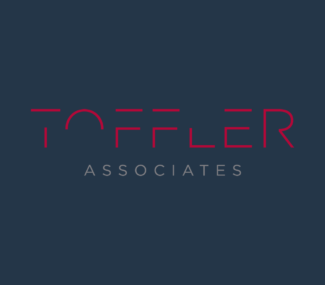Finding Your Place in the Innovation Ecosystem

The biosphere is the sum of all the ecosystems. It is alternatively fragile and incredibly resilient, based on the extent to which its components work in harmony. An innovation ecosystem is the sum of internal and external opportunities and challenges. It is alternatively fragile or incredibly resilient based on the extent to which its components work in harmony.
By now, you know that how you position your organization to exist in our environment of complexity, connectivity, and change determines its sustainability and resiliency. That process begins with recognizing that the innovation ecosystem is in constant flux and that thriving within it requires adopting a transformation mindset.
This kind of thinking is a discipline. It begins at the top of the organization and must be embraced by the entire workforce. It recognizes that transformation is not a linear ‘start at A and end at B’ process. Rather, it is a continual state of observation, curiosity, planning, adapting, and executing. It understands the innovation ecosystem as a kind of biosphere – a dynamic symbiosis between internal and external resources, challenges, and opportunities.
What is an Innovation Ecosystem?
One particularly good definition of an innovation ecosystem explains it as, “the large and diverse array of participants and resources that contribute to and are necessary for ongoing innovation in a modern economy.”[1] Like a biosphere, an innovation ecosystem is a fluid mix of elements working together in an ever-changing balance.
If we think about this in terms of the organization, it likely includes people (e.g., entrepreneurs, investors, and employees), partnerships, capital, and market demand. It must include a framework for engaging these constituents in a constant exchange of ideas.
In our modern Knowledge Age information is democratized – yet represents a source of incredible power for those who can control it. With that in mind, it’s absolutely imperative for organizations to maintain the capacity and willingness to spot and optimize changing imperatives and opportunities with new ideas and creations.
The Five Elements of an Innovation Ecosystem[2]
1. Workforce: We’ve talked before about the importance of an organizational structure that recognizes and enables the workforce to create and disseminate knowledge and ideas. These are the team members who are on the front lines. As such, they are a particularly valuable direct line of insight into tactical changes that help the organization connect in new ways with customers and markets.
2. Customers: Opening the floor to customers can produce a boundless number of ideas. Yet challenges of relevance, implementation, and even transparency means that this door should be opened only with a lot of oversight from internal leadership.
3. Partners and Suppliers: Most organizations have trusted alliances with suppliers and partners who support and augment their product and service capabilities. While the exchange requires trust and security measures, these alliances can be incredibly synergetic. Particularly when the relationships cross industries, they can enable orthogonal thinking and alternate future conversations, forecasting, and resource optimization.
4. Competitors and Competimates: Trust issues, legal requirements, and even the attitudes of the teams within each organization can complicate cooperative innovation between competitors. Nonetheless, it can be incredibly powerful. Not only can it extend the capabilities of each organization, it recognizes that the most impactful and useful intelligence sources are individuals – and those people might be employed elsewhere.
5. Public Innovation: Open source innovation programs require a well-structured framework. Done well, these resources can become a receptacle for an incredible volume of knowledge and creativity that never could be matched by employees and partners. Yet, this resource requires a structure that can vet and transform ideas into real innovations.
The opportunity for knowledge and creativity is boundless. The innovation ecosystem is rich with potential. Yet harnessing the data, ideas, opportunities, and challenges flowing inside and around your organization requires more than a willingness to explore, consider, flex, and implement changes – it requires an infrastructure for transformation.
Here’s where we return to discipline. A transformation mindset is a cultural willingness to see and pursue change. But an agility framework is what enables the organizational transformation to happen.
That transformation approach begins with mapping your own innovation ecosystem so you understand how your people, processes, technologies, and relationships work together to form your innovative capacity. From there, you can build an agile structure that allows you to adapt and engage in this living, changing environment.
We are living and doing business in one of the most vibrant eras in history. Change is constant and information is everywhere. Those who can channel it hold the power and wealth. For leaders, this is the kind of two-sided challenge/opportunity coin that frames every innovation pursuit.
It’s time to flip the coin to opportunity by embracing your innovation ecosystem and transformation.
{{cta(‘bc9ba0a2-ec02-401a-8b7c-a568db3188ce’)}}
[1] Massachusetts Technology Collaborative
[2] The Innovation Ecosystem for the Future of Work, Jacob Morgan, Forbes, August 2015
- Categories
- Strategic Planning
- Workforce of the Future


 About the Authors
About the Authors